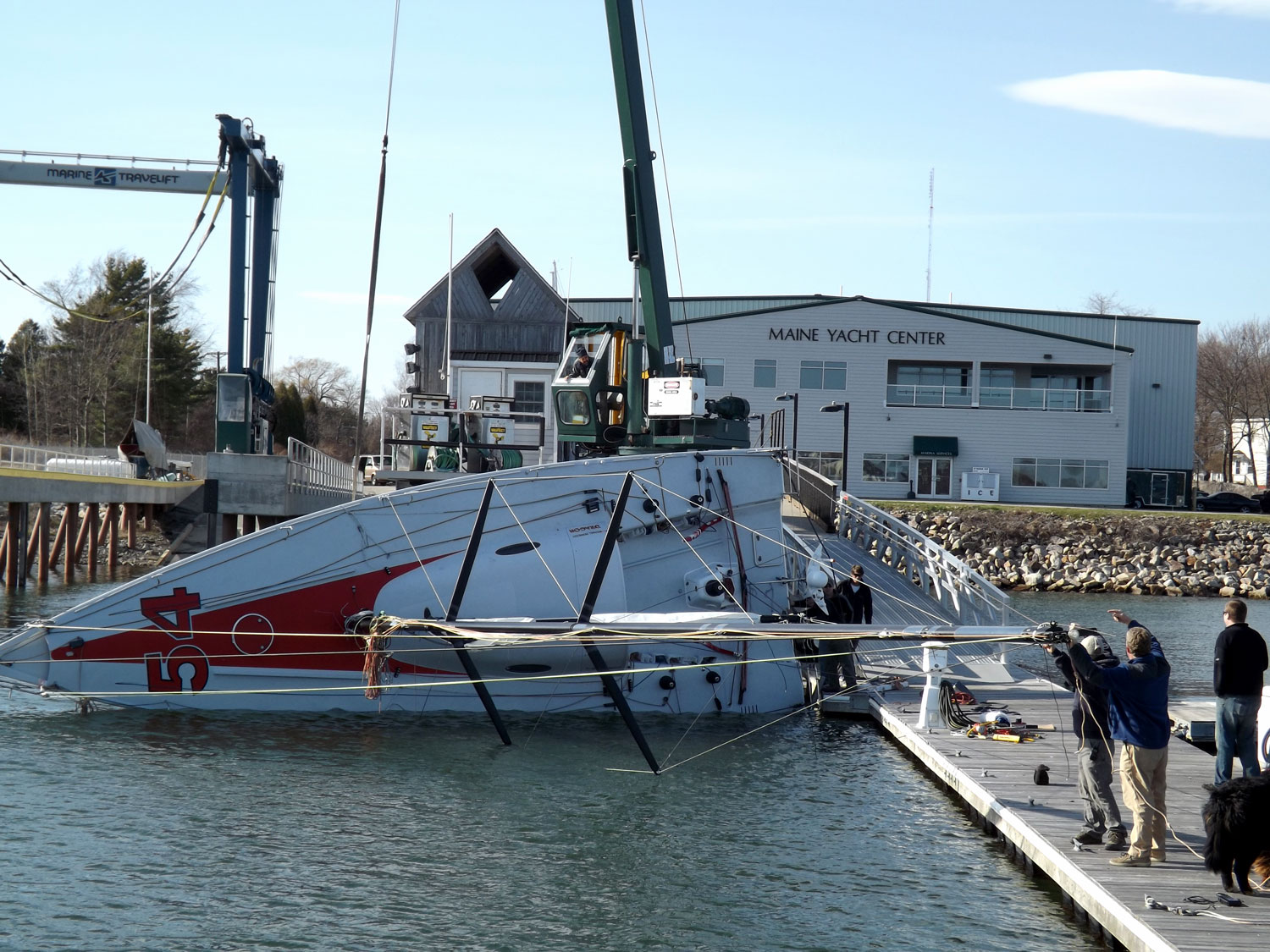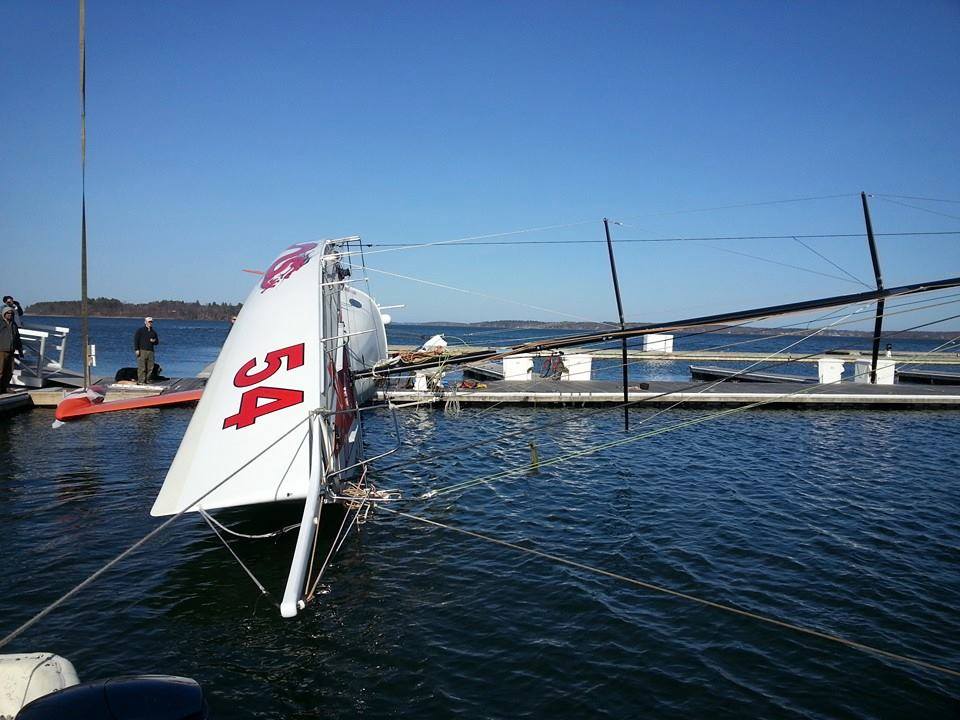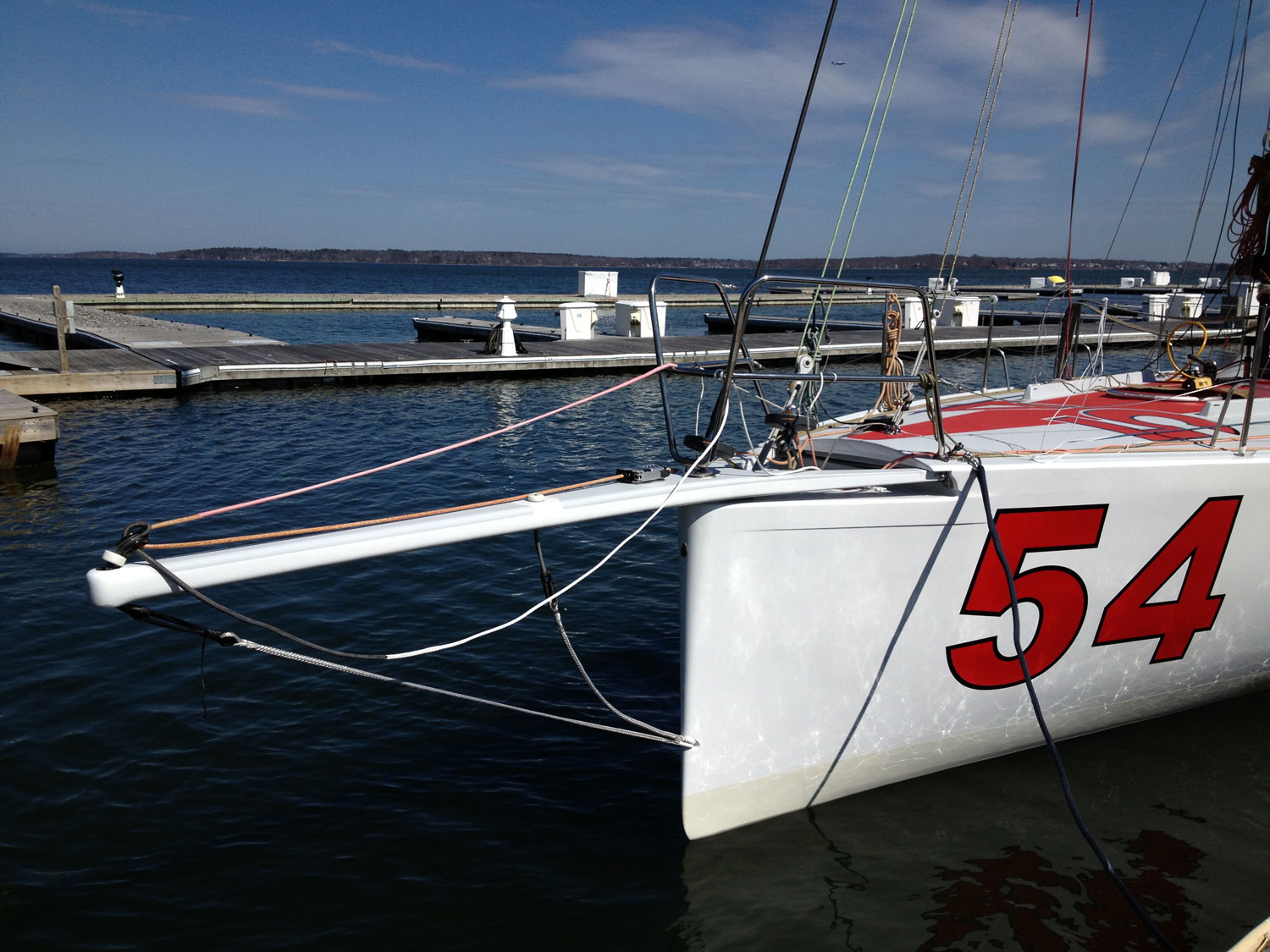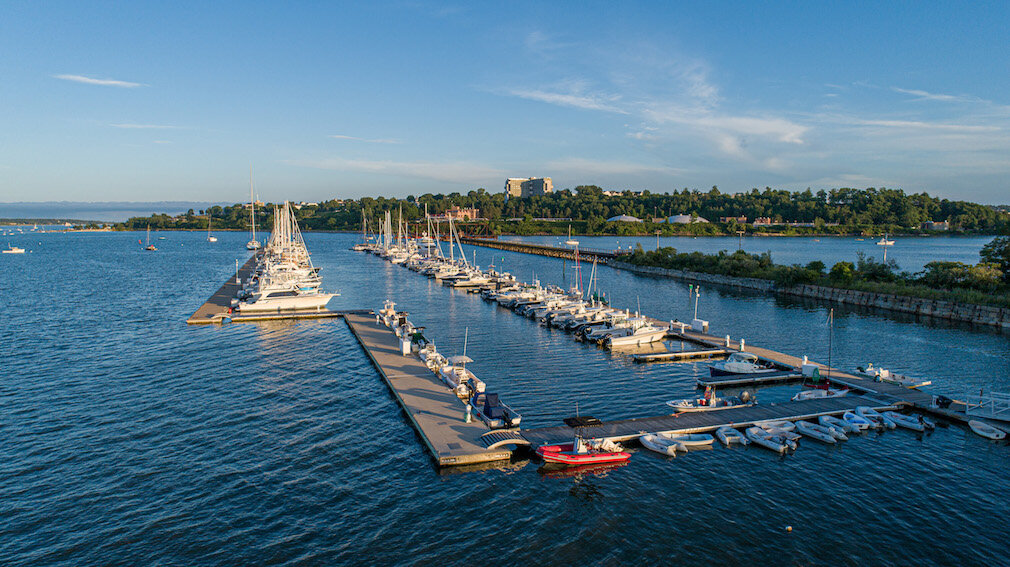First, let’s set the stage. Previously we had a 1986 Perkins diesel. It gave us no more than 5.5-6 knots (mostly with the current behind us) using 2.5 gallons per hour or more. It filled the boat with fumes, the most noticeable from hydraulic fluid. It bellowed black smoke on start-up, if it started up at all as the engine spent nearly all of last year with a 60/40 chance of starting without needing to use all of the battery power on the boat.
Learning about the State of Maine’s Clean Marine Diesel funding gave us the inspiration we needed to put our re-power research into high gear. We had been looking at re-powering and the possibility of going to a completely electric propulsion system. We (optimistically) envisioned a boat without any combustion engines, powered only by renewables in the form of solar, wind and hydro power.
We had no-compromise requirements and some compromises we’d be willing to make. Safety was no compromise. That means we needed reliability and range. Next came environmental considerations: improved efficiency and reduced emissions. Then, human comfort: reduced noise and fumes and finally, features such as ability to use biofuels and seamless switch over - not needing to rewire the whole boat or learn entirely new procedures (which we would do if we had to, but better if we didn’t).
We soon found that, though an electric motor (or two) could power a boat as large and heavy as American Promise, no reasonable combination of electric power and battery banks could give us a safe range. For example, if we installed $80,000 of lithium-ion batteries (charged by solar, wind or hydro power and/or a diesel generator), we would only have 2-3 hours at 5 knots to travel before the stored power would be depleted. At that point, our only option for powered propulsion would be via the diesel generator which, until the batteries could be charged, could only provide approximately 3 knots of speed. The river where we keep our mooring has that much current at max flow. That is no speed at which one can outrun (or end run) a thunderstorm. It became obvious that, while there are boats for whom electric power is a viable option, for American Promise, there is not enough range or safety to be found in an electric motor now or in the near future.
Enter the Steyr, Tier 3 marine diesel. We chose this motor for several reasons. All of which are a reality for us. Here are the stats:
This summer we averaged 8-9 kts under power using 1.8-2 gallons per hour.
We do not have a boat filled with fumes. This engine has an 80% reduction in nitrous oxide emissions over a Tier 2 engine.
We do not belch black smoke upon start up, nor at any time. This engine has an 150% reduction in particulate matter over a Tier 2 engine and 1000% improvement from our 1986 diesel.
The engine starts every time we turn the key.
We can NOT hear that the engine is on while on the bow all the way to aft of the mast (unbelievable). We do not need to shout over it when under power down below or in the cockpit.
We outran 2 severe and fast moving thunderstorms arriving at our mooring with time to spare for one that slammed us with 60 knots at the top of the mast
We were always able to maintain control and precision in the swift moving waters of our homeport (the back channel of Kittery Point off the Piscataqua River)
We did not need to rewire the entire boat.
We did not need to learn any new procedures. We check the oil, we turn the key, we check the exhaust and we go. The maintenance schedule is reasonable and easy to follow. Our two home boatyards (Kittery Point Yacht Yard and Maine Yacht Center, who did the installation) are certified to work on the engine.
Using a combination of power and sail and the generator for house bank power, we traveled 170 miles over 3 days for $61 in fuel from Northeast Harbor to Frenchboro to Hurricane Island to the Isles of Shoals and home to Kittery Point (includes conducting 4 surface tows under power before topping off the tank at the end of the expedition).
In addition to the above, once we are out of the break-in period we will be able to start running on biodiesel - all the way to B100. We could even be eradicating ocean pollution while running on restaurant waste in the form of veggie oil.
American Promise is the first vessel in North America to install this Tier 3 Steyr engine. The technology and features are new to the boating public. We showed the engine off to people all over the Gulf of Maine and in Boston and we are spreading the word that a switch to a Tier 3 marine diesel is a reasonable and accessible change that anyone who uses a diesel can make when ready to re-power. The benefits to the environment are easy to see and achieve (significant reduction in emissions, reduced footprint by increased efficiency and using renewable fuels), the benefits to those onboard are immediate (reduced noise and reduced fumes), and the benefits to the owners/operators clear (improved safety, same procedures with better performance, reduced operating/fuel cost).
Rozalia Project is grateful for support from the State of Maine Clean Marine Diesel Program with the Maine Marine Trades Association; 11th Hour Racing and Kilroy Realty Corporation as well as the Maine Yacht Center and Kittery Point Yacht Yard. Support from these forward thinking organizations made a big difference to Rozalia Project and American Promise. We will have a wider and wider effect as we share the technology and results with the boating community and everyone who loves the ocean and wants to do their part to keep it healthy.
Thank you for everything you are doing for Rozalia Project and our oceans. We will see you on the docks soon!
For a clean ocean,
rzm
Rachael Z. Miller
Co-Founder/Executive Director
Rozalia Project for a Clean Ocean





